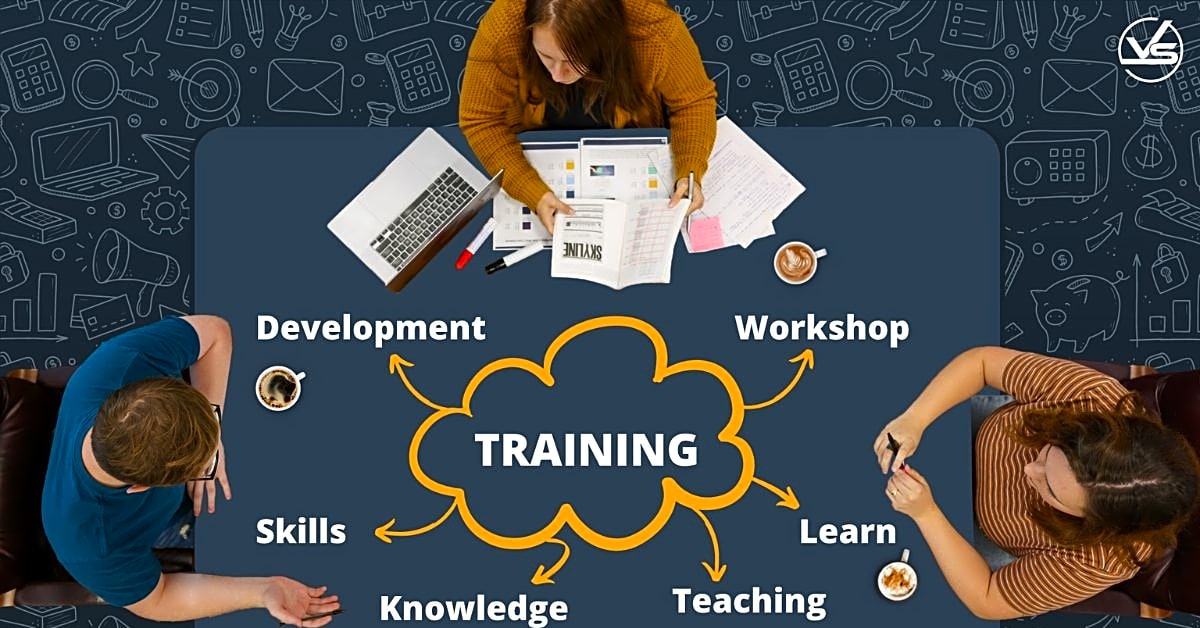In today’s fast-paced business world, efficiency is key. Every minute and every resource counts, and eliminating waste and redundancy can significantly impact your bottom line. By streamlining processes and cutting out unnecessary steps, you can maximize productivity and ultimately increase profits. In this article, we will dive into the concept of eliminating waste and redundancy, its importance in business, and how you can implement it in your own company. Whether you are a small startup or a large corporation, this article will provide valuable insights and strategies to help you achieve maximum efficiency. So, let’s get started on our journey to improve productivity and eliminate waste and redundancy in your business.
Eliminating Waste and Redundancy: Maximize Efficiency in Your Business
Running a successful business requires efficient management of resources and processes. In today’s competitive market, eliminating waste and redundancy is crucial for achieving maximum productivity and profitability. This article will provide you with practical tips and strategies to help you streamline your business operations and achieve your goals.
Firstly, it’s important to understand the difference between waste and redundancy in a business context. Waste refers to any activity or process that does not add value to your business or its customers. This could include unnecessary steps in a production process, excessive inventory, or underutilized resources. Redundancy, on the other hand, refers to duplicative tasks or processes that can be combined or eliminated. By identifying and eliminating waste and redundancy in your business, you can significantly improve efficiency and save valuable time and resources.
To effectively eliminate waste and redundancy, it’s important to analyze your current processes and identify areas that can be improved. This could involve conducting a thorough audit of your operations or seeking feedback from employees. Look for ways to simplify processes, reduce unnecessary steps, and automate repetitive tasks. For example, implementing project management software can help streamline communication and task allocation among team members, reducing the need for multiple emails or meetings.
Another key aspect of eliminating waste and redundancy is effective time management. Time is a valuable resource in any business, and wasting it can have a significant impact on productivity. Encourage your employees to prioritize their tasks and use time management techniques such as setting deadlines and delegating tasks to avoid unnecessary delays or duplication of work.
Team building and effective communication are also crucial for eliminating waste and redundancy. By fostering a positive and collaborative work environment, you can improve team dynamics and reduce conflicts that can lead to inefficiencies. Regular communication and clear expectations can also help employees understand their roles and responsibilities, reducing the chances of duplication or wasted effort.
Decision making is another important aspect of eliminating waste and redundancy. Indecisiveness or poor decision making can result in wasted time, resources, and opportunities. Encourage a culture of data-driven decision making in your business, where decisions are based on facts and analysis rather than personal opinions or biases. This can help avoid repeating mistakes or investing resources in unprofitable ventures.
Finally, organizational skills play a crucial role in eliminating waste and redundancy. By keeping your business organized, you can ensure that resources are used efficiently and processes are streamlined. This could include setting up an efficient filing system, maintaining accurate inventory records, or using project management tools to track progress.
Overall, eliminating waste and redundancy is an ongoing process that requires continuous improvement and adaptation to changing circumstances. By implementing the tips and strategies outlined in this article, you can optimize your business operations and achieve maximum efficiency and productivity.
Identifying Waste and Redundancy
Running a successful business requires efficient management of resources and processes. In today’s competitive market, it is essential to identify areas of waste and redundancy in your business in order to achieve maximum productivity and profitability. By learning how to identify these areas, you can effectively streamline your operations and eliminate unnecessary expenses. One way to do this is by conducting a thorough analysis of your current processes and identifying any redundancies or inefficiencies. Another method is to regularly review your expenses and determine if there are any unnecessary costs that can be cut. By consistently identifying waste and redundancy in your business, you can ensure that you are operating at peak efficiency and maximizing your profits.
Streamlining Processes
Running a successful business requires efficient management of resources and processes. In order to eliminate waste and redundancy, it is important to streamline your processes and reduce unnecessary steps. This not only improves productivity but also saves time and resources, allowing your business to operate more efficiently.
One practical tip for streamlining processes is to regularly review and assess your current workflows. Identify any steps or tasks that are redundant or not contributing to the overall efficiency of your business. By eliminating these unnecessary steps, you can simplify and streamline your processes.
Another strategy is to automate repetitive tasks using technology. This can save time and resources, freeing up employees to focus on more important tasks. Additionally, automating tasks reduces the risk of human error, leading to more accurate and efficient processes.
Furthermore, communication is key in streamlining processes. Make sure all team members are aware of the most efficient workflows and are working together towards the same goal. This will help avoid duplication of efforts and ensure that everyone is on the same page.
By implementing these practical tips, you can simplify your processes and eliminate any waste or redundancy. This will not only improve efficiency but also contribute to the overall success of your business.
Building a Strong Team
In order to effectively eliminate waste and redundancy in your business, it is important to have a strong team in place. A cohesive and well-functioning team can greatly improve efficiency and productivity.
One key aspect of building a strong team is effective communication. When team members are able to communicate clearly and openly, tasks can be completed more efficiently and mistakes can be avoided. This can help reduce the amount of time and resources wasted on correcting errors or miscommunications.
Another important aspect of team building is fostering a sense of collaboration and teamwork. When team members feel connected and motivated to work towards a common goal, they are more likely to work together efficiently and effectively.
It is also important to ensure that each team member is properly trained and equipped with the necessary skills and knowledge to perform their job effectively. This can help prevent mistakes and delays, further improving overall efficiency.
By investing in team building and effective communication, you can create a strong and efficient team that will help your business thrive. Make sure to regularly assess your team’s dynamics and address any issues that may arise in order to maintain a high level of efficiency.
Data-Driven Decision Making
use HTML structure with Data-Driven Decision Making only for main keywords and
When running a business, it is essential to make informed decisions to avoid waste and redundancy. By analyzing data and using it to drive your decisions, you can identify areas of improvement and optimize your processes for maximum efficiency. This not only saves time and resources, but also leads to higher productivity and profitability. With data-driven decision making, you can stay ahead of the competition and achieve your goals.
Data-driven decision making involves collecting and analyzing relevant data, such as customer feedback, sales data, and market trends. This allows you to identify patterns and trends, make accurate predictions, and make strategic decisions based on evidence rather than assumptions. By continuously monitoring and evaluating your data, you can also identify potential issues or inefficiencies and address them before they become major problems.
In addition to improving efficiency, data-driven decision making can also help you make more informed decisions in terms of resource allocation and investments. By understanding which areas of your business are performing well and which need improvement, you can allocate resources accordingly and make strategic investments that will have a positive impact on your bottom line.
Overall, embracing data-driven decision making is crucial for eliminating waste and redundancy in your business. By understanding the importance of making informed decisions, you can optimize your operations, increase productivity, and achieve your business goals.
Effective Time Management
In today’s fast-paced business world, time is a valuable resource that must be managed effectively in order to achieve maximum productivity. In order to eliminate waste and redundancy, it is crucial for businesses to prioritize and make the most of their time. Here are some practical tips to help you improve your time management skills:
1. Set clear goals and priorities: Before you start your day, take some time to set clear goals and priorities. This will help you stay focused and ensure that you are working on tasks that are aligned with your business objectives.
2. Use time tracking tools: There are many time tracking tools available that can help you monitor and analyze how you are spending your time. This can help you identify areas where you are wasting time and make necessary adjustments.
3. Delegate tasks: As a business owner, it can be tempting to take on all tasks yourself. However, delegating tasks to capable team members can free up your time to focus on more important tasks.
4. Avoid multitasking: While it may seem like multitasking can help you get more done, it can actually decrease productivity and lead to mistakes. Instead, focus on one task at a time and give it your full attention.
By implementing these strategies, you can make the most of your time and maximize efficiency in your business operations. Remember, effective time management is essential for eliminating waste and redundancy and achieving success in today’s competitive market.
Organizational Skills
In the fast-paced world of business, it’s easy for things to become chaotic and disorganized. But did you know that keeping your business organized can actually improve efficiency? By implementing strong organizational skills, you can eliminate waste and redundancy and maximize productivity in your business.
One of the main benefits of organizational skills is the ability to streamline processes and workflows. When everything has a designated place and method, tasks can be completed more efficiently without wasting time searching for items or figuring out the next steps. This also helps to avoid duplication of efforts and reduces the risk of errors due to miscommunication or confusion.
Another benefit of keeping your business organized is that it allows for better resource management. By knowing exactly what resources are available and where they are located, you can avoid overspending or underutilizing resources, ultimately saving time and money.
Organizational skills also promote a sense of structure and discipline within a business. When everyone is on the same page and follows a set system, it leads to a more efficient and productive work environment. This helps to minimize distractions and allows employees to focus on their tasks without getting sidetracked.
Furthermore, being organized can improve communication within a business. When information is easily accessible and shared among team members, it promotes collaboration and ensures that everyone is working towards the same goals. This leads to a more cohesive and efficient team dynamic.
In conclusion, incorporating strong organizational skills in your business can have a significant impact on efficiency and productivity. By streamlining processes, managing resources effectively, promoting structure and discipline, and improving communication, you can eliminate waste and redundancy and achieve maximum success in your business.
Eliminating waste and redundancy is essential for any business looking to achieve long-term success. By implementing the strategies outlined in this article, you can improve productivity, reduce costs, and create a more efficient and profitable business. Remember to regularly review and adapt your processes to ensure continuous improvement.






